With Chinese People’s Liberation Army Air Force (PLAAF) H-6 bombers positioned in large numbers at Kashgar, and also a few at Hotan, both in Xinjiang, not too far from the Ladakh border, it is time to understand the importance and role of strategic bombers. The major world powers have had strategic bombers since World War II. Even today the three largest air forces of the world, of USA, Russia and China operate strategic bombers. India, with the fourth largest air force does not have strategic bombers. It is also time to understand the implications and need for the same for India.
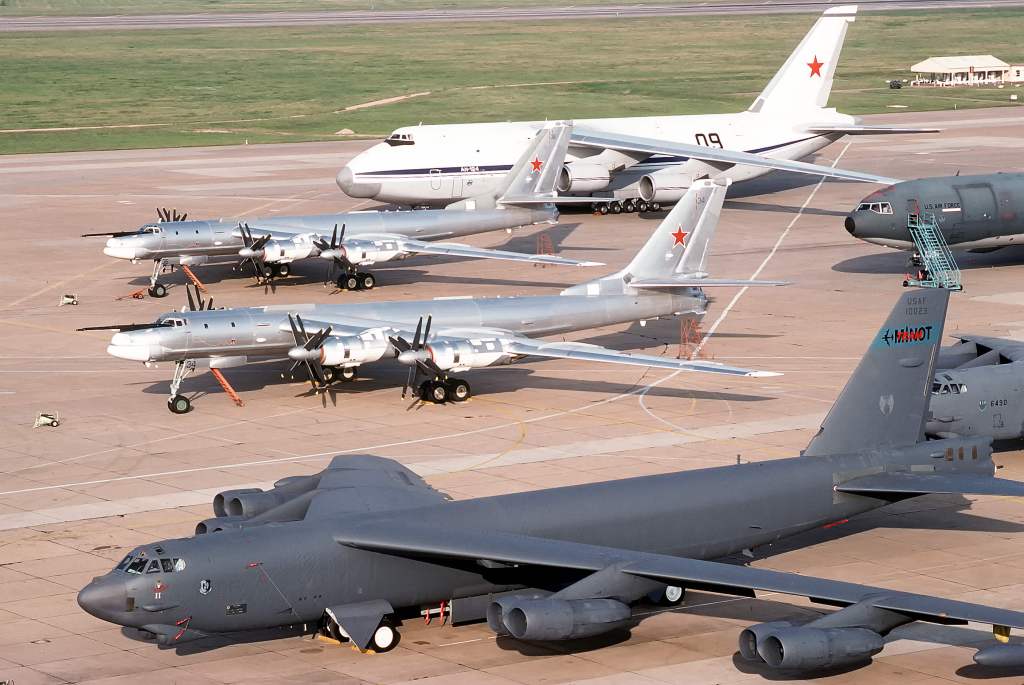
The Strategic Bomber
A strategic bomber is a medium-to-long-range bomber aircraft designed to drop large amounts of air-to-ground weaponry on distant targets for impeding the enemy’s capacity to wage war. Unlike tactical bombers, fighter-bombers, and attack aircraft, which are used in air interdiction operations to attack enemy combatants and military equipment, strategic bombers are designed to fly into enemy territory to destroy strategic targets such as major infrastructure, logistics, military installations, factories, and cities. Medium bombers were used in large numbers in World War II for strategic bombing, but they were in itself not strategic aircraft. The real strategic bomber role appeared when atomic bombs were first used in combat during World War II. Nuclear strike missions to delivering nuclear-armed missiles or bombs can potentially be carried out by most modern fighter-bombers and strike fighters, even at intercontinental range, with the use of aerial refueling, so any nation possessing this combination of equipment and techniques theoretically has such capability. Primary delivery aircraft for a modern strategic bombing mission need not always necessarily be a heavy bomber type, and any modern aircraft capable of nuclear strikes at long range is equally able to carry out tactical missions with conventional weapons. In case of India, the Su-30 MKI, Mirage-2000, Jaguar, and Rafale all have strategic nuclear delivery capability.

Tactical Bombing
Tactical bombing is aerial bombing aimed at targets of immediate military value, such as combatants, military installations, or military equipment. A tactical bomber is intended primary for tactical bombing, even though strategic bombers have been used in tactical bombing operations. Tactical bombing is invariably for more direct support to surface forces. Air interdiction, by contrast, attacks tactical targets that are distant from or otherwise not in contact with friendly units.

Aerial Bombing Evolves
Tactical bombing was the first type of aerial bombing mission. It began in World War I when pilots dropped small bombs over the side of their open cockpits onto enemy troops below. During the Battle of Neuve Chapelle in 1915, the Royal Flying Corps dropped bombs on German rail communications. By the time of World War II many specialized aircraft were developed, including various fighter-bombers. In the modern era, precision-guided munitions (smart bombs) can be directed with extreme accuracy.
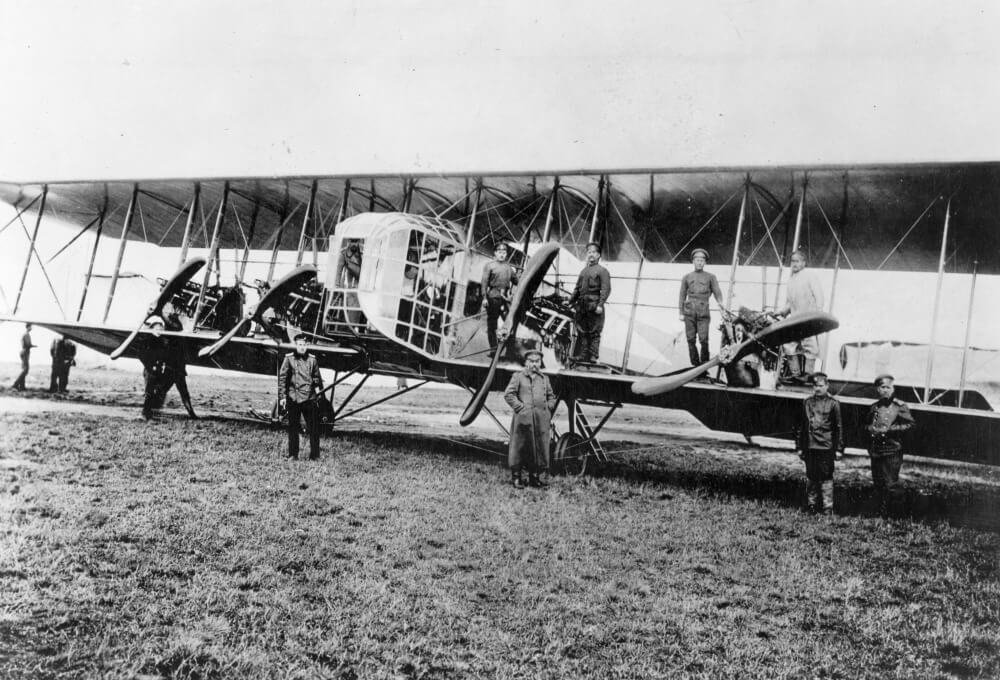
Initial Strategic Bombing
The first strategic bombing took place during World War I (1914–18), by the Russians with their Sikorsky Ilya Muromets bomber (the first heavy four-engine aircraft), and by the Germans using Zeppelins or long-range multi-engine Gotha aircraft. Zeppelins reached England on bombing raids by 1915, forcing the British to create extensive defense systems including some of the first anti-aircraft guns which were often used with searchlights to highlight the enemy machines overhead. Late in the war, American fliers under the command of Brig. Gen. Billy Mitchell were developing multi-aircraft “mass” bombing missions behind German lines, although the Armistice ended full realization of what was being planned.

Study of strategic bombing continued in the interwar years. British Prime Minister Stanley Baldwin told the House of Commons early in the 1930s that “the bomber will always get through” no matter what defensive systems were undertaken. It was widely believed by the late 1930s that strategic “terror” bombing of cities in any war would quickly result in devastating losses and might decide a conflict in a matter of days or weeks. But theory far exceeded what most air forces could actually put into the air. Germany focused on short-range tactical bombers. Britain’s Royal Air Force (RAF) began developing four-engine long-range bombers in the late 1930s. The U.S. Army Air Corps was severely limited by small budgets in the late 1930s, and only barely saved the B-17 bomber that would soon be vital. The equally important B-24 first flew in 1939. Both aircraft would constitute the bulk of the American bomber force that made the Allied daylight bombing of Nazi Germany possible in 1943–45. The RAF concentrated its efforts on night bombing. But neither force had good bombsights for “pinpoint” accuracy. The Germans used medium bombers such as the Heinkel He 111, He 177A, and the Junkers Ju 88A. Only post WW II the overall notion of strategic bombing, and attempts to create “smart bombs” began.

Post WW II – The Heavy Bomber
Around end of the WW II, the “heavy” bomber, was epitomized by the British Avro Lancaster and American Boeing B-29 Superfortress used in the Pacific Theater, for area bombing of Japanese cities. The U.S. 20th Air Force, based in the Mariana Islands, undertook low-level incendiary bombing missions, results of which were soon measured in the number of square miles destroyed. The air raids on Japan had withered the nation’s ability to continue fighting, although the Japanese government delayed surrender, resulting the atomic bombs dropped on Hiroshima and Nagasaki in August 1945.

The Cold War Strategic Bombers
During the Cold War, the United States and United Kingdom on one side and the Soviet Union on the other kept strategic bombers ready to take off on short notice as part of the deterrent strategy of mutual assured destruction (MAD). Most strategic bombers of the two superpowers were designed to deliver nuclear weapons. For a time, some squadrons of Boeing B-52 Stratofortress bombers were kept in the air around the clock, orbiting some distance away from their fail-safe points near the Soviet border. The British produced three types of “V bombers” for nuclear delivery. These bombers could reach up to cities like Kiev or Moscow. Two types of V bombers, the Avro Vulcan and the Handley Page Victor were used in the Falklands War towards the end of their operational lives.

The Soviet Union produced hundreds of unlicensed, reverse-engineered copies of the American Boeing B-29 Superfortress, called the Tupolev Tu-4. The Soviets later developed the jet-powered Tupolev Tu-16 “Badger”. The People’s Republic of China produced a version of Tupolev Tu-16 on license from the Soviet Union in the 1960s which they named the Xian H-6.

Fighter Bombers With Nuclear Role
During the 1960s France produced its Dassault Mirage IV nuclear-armed bomber for the French Air Force as a part of its independent nuclear strike force, using French-made nuclear IRBMs. Mirage IVs served until mid-1996 in the bomber role, and till 2005 as a reconnaissance aircraft. France also has stand-off nuclear missiles such as the Mach 3, ASMP, with 500 kilometers range. These missiles can be delivered by the Dassault Mirage 2000N and Rafale fighter-bombers.
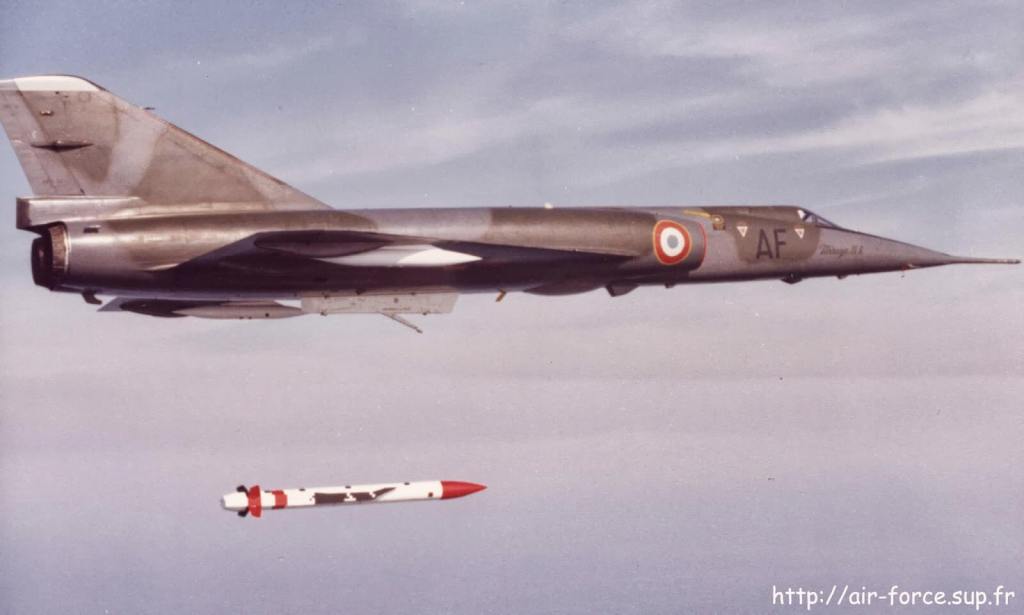
New Strategic Bombers
Newer strategic bombers such as the Rockwell International B-1B Lancer, the Tupolev Tu-160, and the Northrop Grumman B-2 Spirit designs incorporate various levels of stealth technology in an effort to avoid detection, especially by radar networks. Despite these advances earlier strategic bombers, for example the B-52 (last produced in 1962) or the Tupolev Tu-95 remain in service and can also deploy the latest air-launched cruise missiles and other “stand-off” or precision guided weapons such as the JASSM and the JDAM. The Russian Air Force’s new Tu-160 strategic bombers are still expected to be produced for 10 to 20 years. In addition, the current Tu-95 and Tu-160 bombers will be periodically updated, as was done during the 1990s with the Tu-22M bombers. all these Strategic bombers are primarily designed to be armed with nuclear weapons, but are often used for non-nuclear, high explosive weapons. During the Vietnam War, Operation Menu, Operation Freedom Deal, Gulf War, military action in Afghanistan, and the 2003 invasion of Iraq, American B-52s and B-1s were mostly employed in tactical roles. During the Soviet-Afghan war in 1979–88, Soviet Air Forces Tu-22Ms carried out several mass air raids in various regions of Afghanistan.

Nomenclature of Strategic Bombers
Nomenclature of bomber depends on size and classification of aircraft. The B-29 was an initial benchmark aircraft of the heavy bomber type at end of World War II due to its size, range and load carrying ability. Bombers became intercontinental range strategic bomber with the development of aerial refueling. The Boeing B-47 Stratojets was a “medium bomber”. Boeing B-52 Stratofortress is a “heavy bomber”. Some of the nuclear capable fighter-bombers like the American FB-111, and France’s Dassault Mirage IV or Rafale might also be classified as medium bombers.
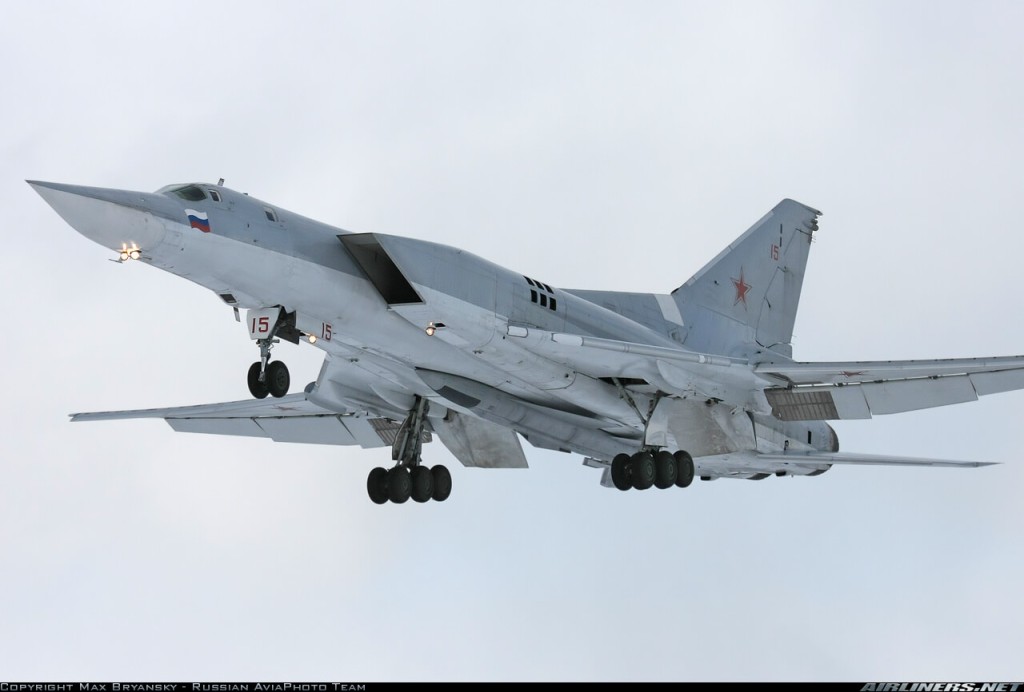
Weapon Load
Weapons loads can include nuclear-armed missiles as well as aerial bombs. Typically some of the older aircraft Boeing B-50 Superfortress would carry 28,000 lb, Tupolev Tu-16 (20,000 lb), and Tupolev Tu-95 (55,000 lb). Much bigger eight engine Boeing B-52 Stratofortress carries 70,000 lb (32,000 kg). Among the supersonic bombers, Rockwell B-1 Lancer with 6 external hardpoints for of ordnance with a capacity of 50,000 pounds (23,000 kg). Tupolev Tu-22M Backfire 24,000 kg (53,000 lb). The PLAAF’s Xian H-6 can carry max 9,000 kg (20,000 lb) or six 6 or 7 KD-88 cruise missile (anti-ship or air-to-surface). Tupolev Tu-160 Blackjack carries 45,000 kg (99,208 lb) of ordnance. This includes two internal rotary launchers each holding 6× Raduga Kh-55SM/101/102/555 cruise missiles or 12× AS-16 Kickback short-range nuclear missiles. Northrop Grumman B-2 Spirit, also known as the Stealth Bomber, is an American heavy strategic bomber, featuring low observable stealth technology designed for penetrating dense anti-aircraft defenses. It is a flying wing design with a crew of two. The B-2 is capable of all-altitude attack missions up to 50,000 feet (15,000 m), with a range of more than 6,000 nautical miles (11,000 km) on internal fuel and over 10,000 nautical miles (19,000 km) with one midair refueling. 2 internal bays for ordnance and payload with a maximum estimated limit is 50,000 lb (23,000 kg).

Future Strategic Bombers
American Northrop Grumman B-21 is an under-development stealth bomber, to replace a part or all of the current B-2 and B-1. Planned to be deployed in the early 2020s.2037 Bomber will be a stealth, supersonic, long-range, heavy-payload, strategic bomber project to replace the B-52 Stratofortress, with a deployment time frame goal of 2037. Xian H-20 is a Chinese under-development stealth bomber. The Tupolev PAK DA codename “Poslannik” is a next-generation stealth strategic bomber being developed for the Russian Air Force. It will eventually replace the older Tupolev Tu-95.Three PAK DA prototypes are expected to be ready for preliminary testing by April 2023, with the state tests to begin in February 2026. The aircraft is expected to enter serial production in 2027. The subsonic PAK DA would have 12,000 km operational range, and 30 hours endurance, and carry payloads up to 30 tons.
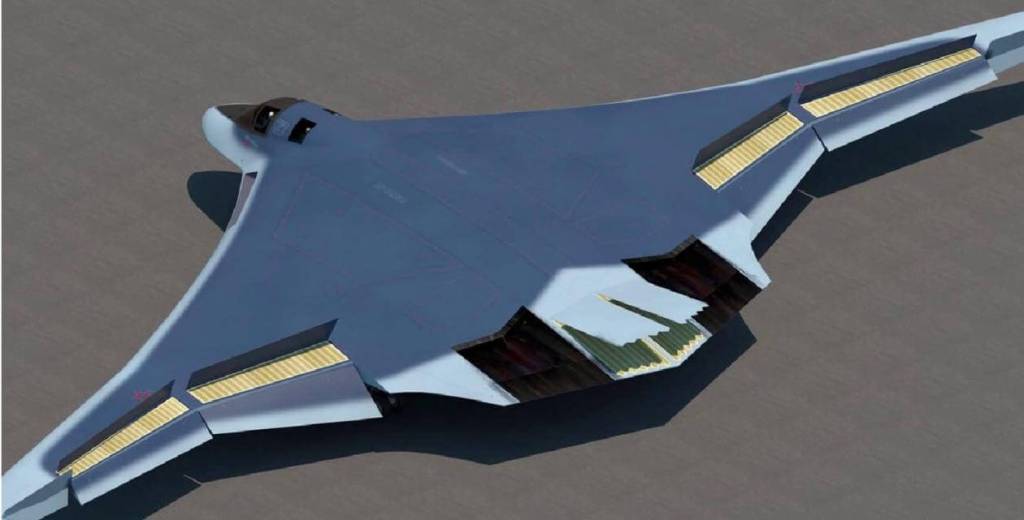
Xian H-20 Subsonic Stealth Bomber
The Chinese Xian H-20 is a projected to be a subsonic stealth bomber for PLAAF. It is referred to as a strategic project. The aircraft looks similar in form and appearance to the American B-2 Spirit, as well as the projected Russian PAK DA. The aircraft will carry nuclear weapons, and may enter service around 2025. China wants a strategic bomber capable of striking targets beyond the second island chain without aerial refueling, while carrying a payload of at least 10 tons. This long-range bomber could have a range of around 12,000 kilometers and carry 20 tons of payload.

The Chinese Xian H-6 Bomber
The Xian H-6 is a license-built version of the Soviet Tupolev Tu-16 twin-engine jet bomber, built for PLAAF. Delivery of the Tu-16 to China began in 1958, and the Xi’an Aircraft Industrial Corporation (XAC) signed a licence production agreement with the USSR to build the type in the late 1950s. The first H-6 flew in 1959. At least around 180 were built into the 1990s. China is estimated to currently operate around 120 of the aircraft. The latest version is the H-6N, a heavily redesigned version capable of aerial refueling and carrying air-launched cruise missiles. According to United States Department of Defense, this will give the PLAAF a long-range standoff offensive air capability with precision-guided munitions.

The H-6 was used to drop nine nuclear devices at the Lop Nur test site. However, with the increased development in ballistic missile technology, the nuclear delivery capabilities that the H-6 offered diminished in importance. Later the H-6 moved over to a dual nuclear/conventional bombing role. The H-6 was the base aircraft, H-6A the nuclear bomber, H-6B was the reconnaissance variant, H-6C conventional bomber and H-6E nuclear bomber with improved countermeasures, and the H-6D anti-ship missile carrier. The HY-6 series are capable of acting as an in-flight fuel tanker. Many H-6A and H-6C aircraft were updated in the 1990s to the H-6F configuration, the main improvement being a modern navigation system, with a Global Positioning System (GPS) satellite constellation receiver, Doppler navigation radar, and inertial navigation system. New production began in the 1990s as well, with Xian building the H-6G, which acts as a director for ground-launched cruise missiles. The H-6H, carries two land-attack cruise missiles. It is believed CJ-10 is the main land attack missile for H-6 bombers. The H-6M cruise missile carrier has four pylons for improved cruise missiles and is fitted with a terrain-following system. Apparently these variants have no internal bomb capability, and most or all of their defensive armament has been deleted.
The H-6K Variant
The H-6K, first flying on January 5, 2007, entered service in October 2009, and made China the fourth country with a strategic bomber after US, Russia and the United Kingdom. The variant has reinforced structure with of composite materials, enlarged engine inlets for Russian Soloviev D-30 turbofan engines giving a claimed combat radius of 3,500 kilometers, a glass cockpit with large size LCD multi-function display, and a reworked nose section eliminating the glazed navigator’s station in favour of a more powerful radar, the H-6K is a significantly more modern aircraft than earlier versions. Six under-wing hard-points for CJ-10A cruise missiles are added. The rear 23 mm guns and gunner position are replaced by electronic components.

The H-6K is designed for long-range stand-off attacks. It is capable of attacking carrier battle groups and priority targets in Asia. This aircraft has nuclear strike capability. While previous models had limited missile capacity, the H-6K can carry up to six YJ-12 ALCMs; a single regiment of 18 H-6Ks fully loaded out with YJ-12s can saturate enemy ships with over 100 supersonic missiles. Although the aircraft has a new nose radome housing a modern air-to-ground radar, it is not clear if the bomber or other Chinese assets yet have the capability to collect accurate targeting information for successful strikes beyond a certain range into the sea. An electro-optical targeting system is fitted under the nose. In January 2009, it was reported that an indigenous turbofan engine, the WS-18 (Soloviev D-30 copy), was under development for use in the H-6K. In 2015, about 15 H-6Ks were in service. A H-6K fitted with a refueling probe may have first flown in December 2016. Besides extending range, a possible mission for the variant may be to launch satellites or ballistic missiles. China is developing two new air-launched ballistic missiles, (CH-AS-X-13) one of which can carry a nuclear warhead. The H-6K would be suited to launch such missiles.

In January 2019, China announced that it had tested an analogous of the American “Mother of all Bombs.” The weapon is carried by an H-6K and takes up the whole of the bomb bay, making it roughly 5–6 m (16–20 ft) long and weighing 10 tons. Chinese media claimed it could be used for wiping out reinforced buildings and shelters as well as clearing obstacles to create an aircraft landing zone.

Indian Bomber Aircraft Story
India operated three squadrons of vintage American heavy bomber B 24 liberators which were left behind by the British when they left India. Liberators were heavy strategic bombers of its time, and used extensively in WW II. They were in service with IAF till 1968. The English Electric Canberra was the backbone of the Indian Air Force (IAF) for bombing raids and photo-reconnaissance for many decades. During the extended negotiations between Britain and India in 1950s, the Soviet Union had offered their own jet bomber, the Ilyushin Il-28. However, in January 1957 India placed an order for the Canberra. 54 B(I).58 bombers, eight PR.57 photo-reconnaissance aircraft, and six T.4 training aircraft were initially ordered. More were purchased later. Canberras played significant reconnaissance role in 1962, and were operationally used in the Indo-Pakistani wars. The fleet was retired by the IAF after 50 years of service, on 11 May 2007. For some reason IAF never chose a replacement bomber and preferred fighter-bombers instead.

H-6 Strengths and Vulnerabilities
Any conflict between India and China is likely to be conventional. The H-6 is a subsonic bomber with large radar cross-section (RCS), as such vulnerable to both airborne and ground based AD weapons. That would limit its use from relatively deeper within Chinese territory. H-6K could of course sneak through supported by its EW system. Its long range would allow it to be positioned deeper in China. Some defence analysts feel that positioning of the H-6 bombers in the region are mainly for exerting psychological pressure on India which does not have a strategic bomber. Shooting down of even a single bomber would seriously dent the PLAAF morale.

Does India Need A Bomber?
In 1962 during 1962 Sino-Indian war India had 22 Squadrons comprising of Western fighter-bomber aircraft like Hunters, Gnats, Mystere, Toofani, Vampire and Canberra. All were relatively better than the Chinese MiG-15, MiG-17, Mig-19 and IL-28 bombers, but IAF was not used. Historians tell us that one reason why the IAF was not used during 1962 Sino-Indian war was that Indian politicians were scared that if air power was used offensively, Chinese Il-28 bombers could be used to attack Indian cities like Kolkata and Guwahati. This had a psychological impact on the leadership of that time. Against Pakistan India has used even the An-12 in bombing role and one squadron of the An-32 also has bombing role. This indicates IAF misses a bomber.

A significant part of China is out of range of Indian fighter bombers. Air refueling is not possible in enemy territory. Chinese bombers can reach much deeper inside India. The three major powers continue to develop future bombers. China will have a stealth bomber in near future. Larger bombers have greater real-estate onboard and will have greater power resource for both electronic warfare and to deploy directed energy weapons. A bomber can help India take the war deeper into enemy territory. It can be a bigger deterrent. Can India’s fighter-bombers, surface-to-surface missiles, and Cruise missiles stand-in for bombers remains a moot question. If it was so true then the major powers need not develop bombers. Also both India and China are large countries, therefore it may be of interest for India to have a bomber of its own. The bombers will carry a large complement of cruise missiles, both for land attack and anti shipping roles. They will be a great asset for dominance of the Indian Ocean Region (IOR). One can expect India and China to maintain adversarial relations for some time to come. China will continue to use surplus resources to befriend India’s neighbours. A strategic bomber would be significant deterrent.
Options for India
Chinese bombers would remain a real threat for India in decades to come. If India has to become a significant power in the long run, it must develop bombers. Bombers as a platform can combine more roles. The future is in Directed Energy Weapons (DEW). A bomber class aircraft will have greater potential. A bomber could also become a platform for launching small satellites. Currently the IAF is down to 30 fighter squadrons. With current defence budgets, it could take nearly two decades and lots of money to reach back to the authorised 42 squadrons. India would also need funds for the fifth-generation fighters. Modern bombers are costly to acquire and maintain. Yet major powers see the investment as important. The American bombers are likely to be very expensive. Some defence analysts have been suggesting acquiring or joining in the development of the Russian stealth bomber PAK-DA. The only other source would be th Americans. India will have to consider acquiring some strategic bombing assets, at least 20 of them.
Picture Source: businessinsider.in


I thought that the Soviets/Russians were making original military hardware, but, I’ve changed my view after knowing that the Kalashnikov was a German derivative much like the Tuploev is an American derivative. Shouldn’t India then simply stop buying Russian military hardware and buy American military hardware?
LikeLike
What about the Russian Okhotnik? Will it be able to match its American and Chinese counterparts?
LikeLike
This is an question unrelated to this post, but, I think you’re best suited to answer this with regard to the IAF. Does the IAF train its personnel in destruction of equipment aboard its aircraft? I ask this because when the US Aries aircraft made a forced landing in Chinese territory, its crew weren’t trained in destruction of equipment aboard it to prevent it falling into Chinese hands.
LikeLike
This https://theintercept.com/2017/04/10/snowden-documents-reveal-scope-of-secrets-exposed-to-china-in-2001-spy-plane-incident/ is what I was talking about.
LikeLike
Yes. It is meant to be done
LikeLiked by 1 person
When Mig21 was shot in PoK Feb27 episode, does the onboard air-to-air missiles and radars in Pak possession now pose any threat to IAF ? Heard that when Mig25 defected to Japan from USSR, Soviets were forced to change missile seekers, and minor design changes of its missiles.
So the loss of Mig21 and its weapons in PoK, pose any threat to existing Mig21s or Su30s weapons used by IAF ?
LikeLiked by 1 person
With the Meteor now in Indian inventory and once new version of Astra, IAF overtakes the temporary advantage that AIM 120 had
LikeLiked by 1 person